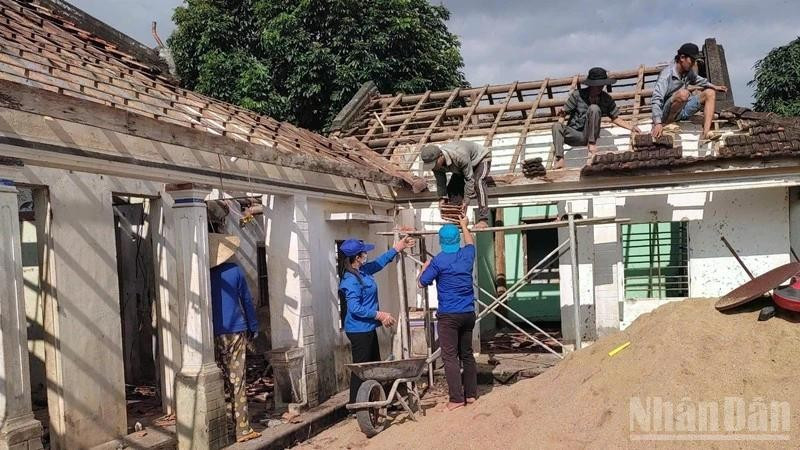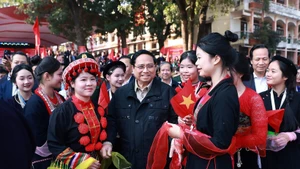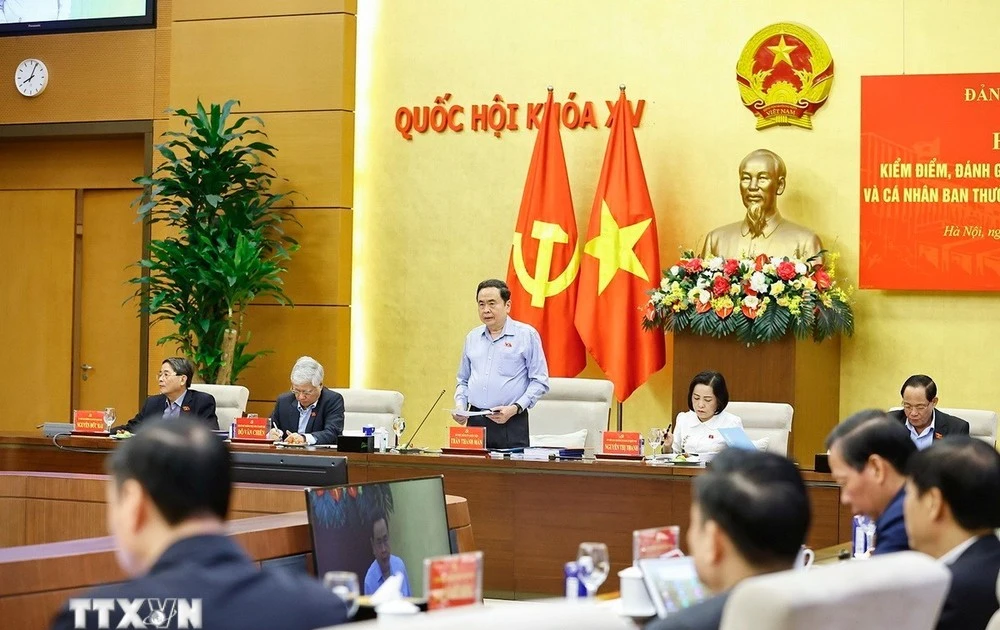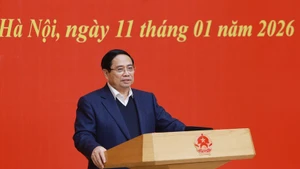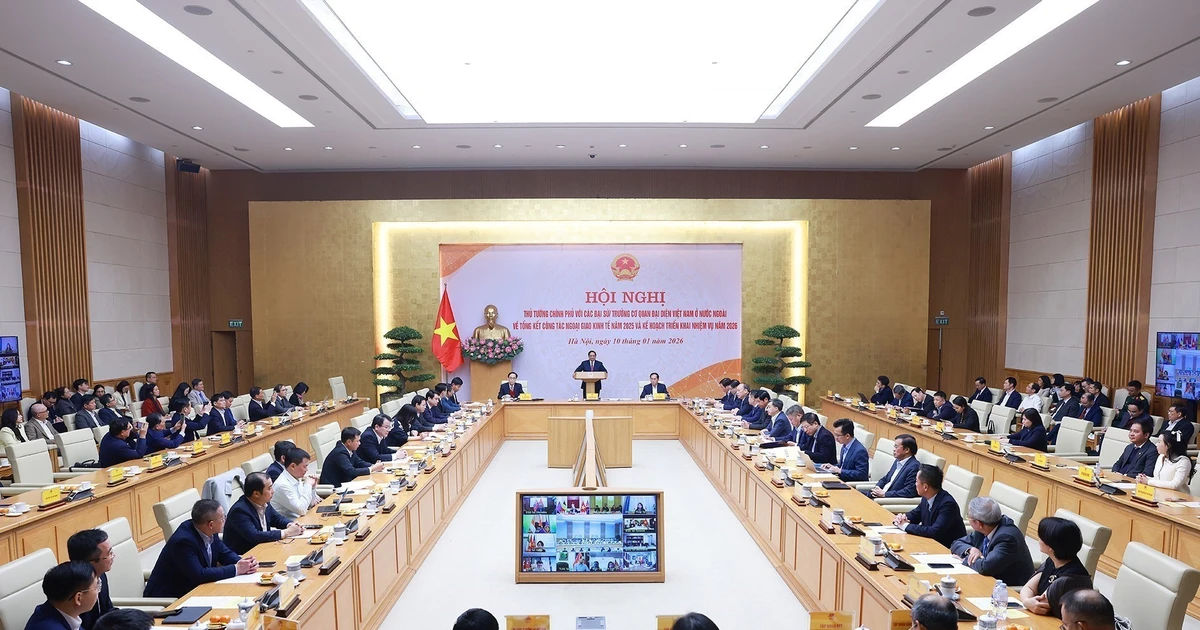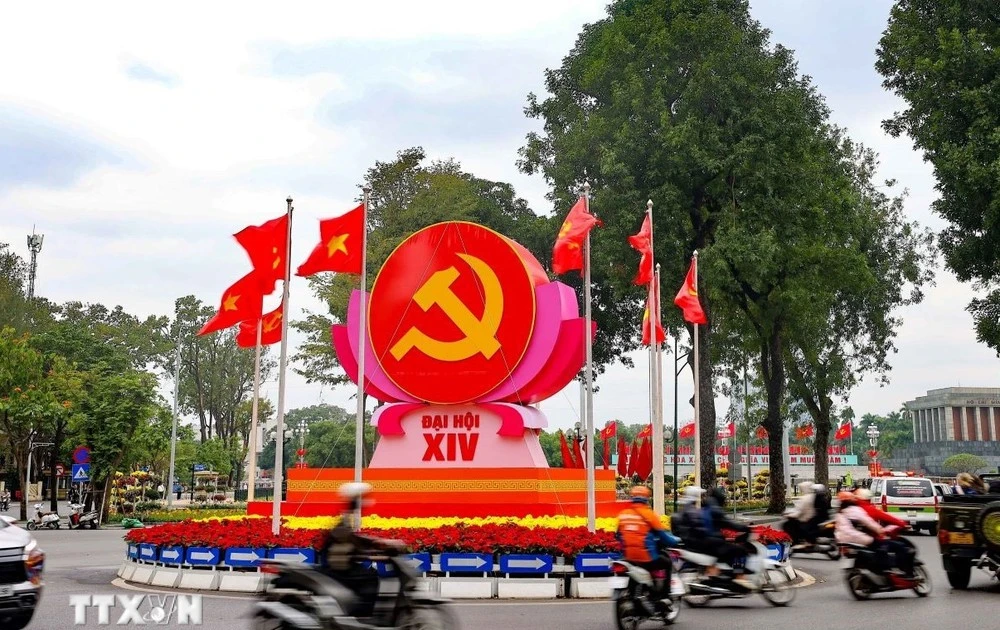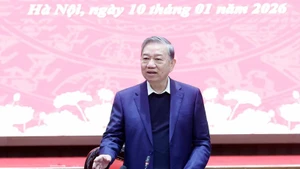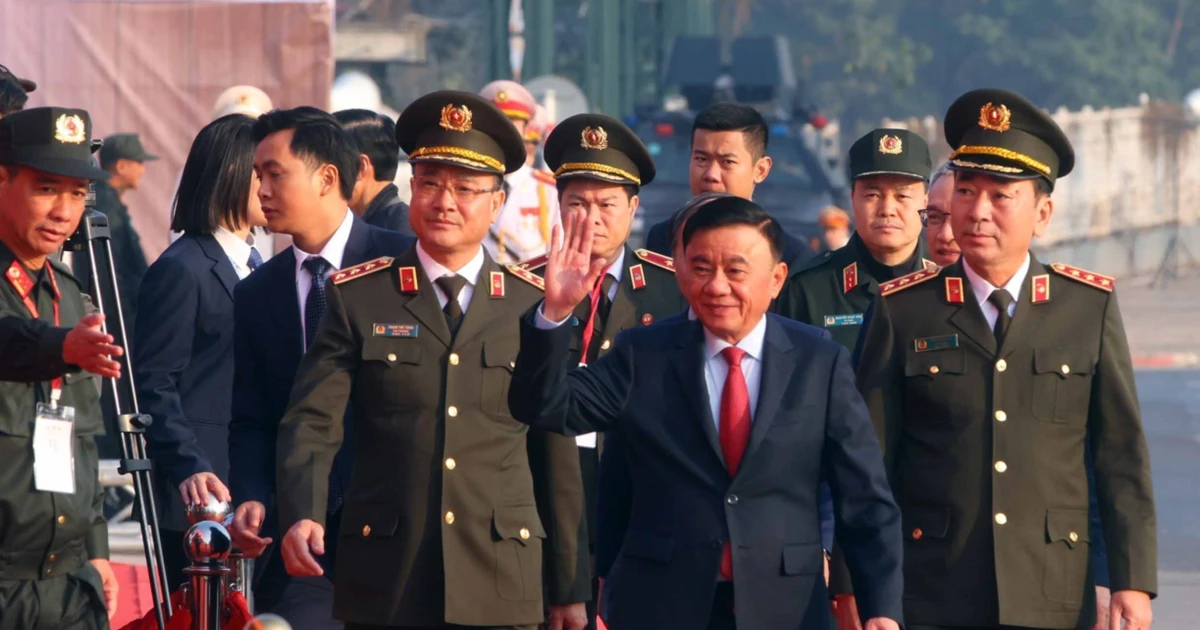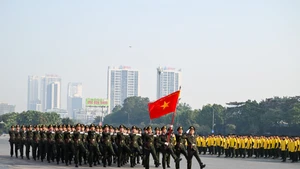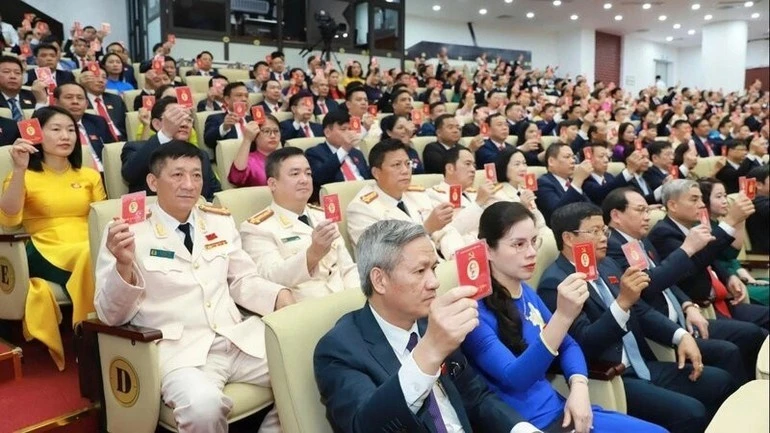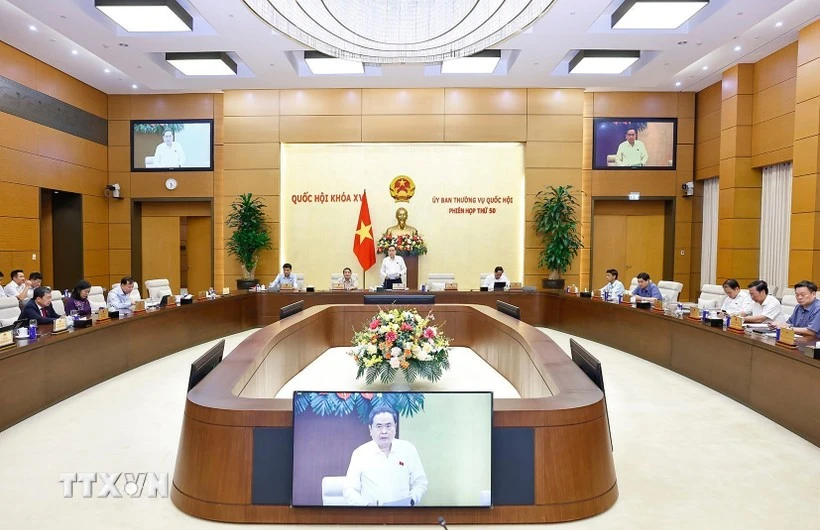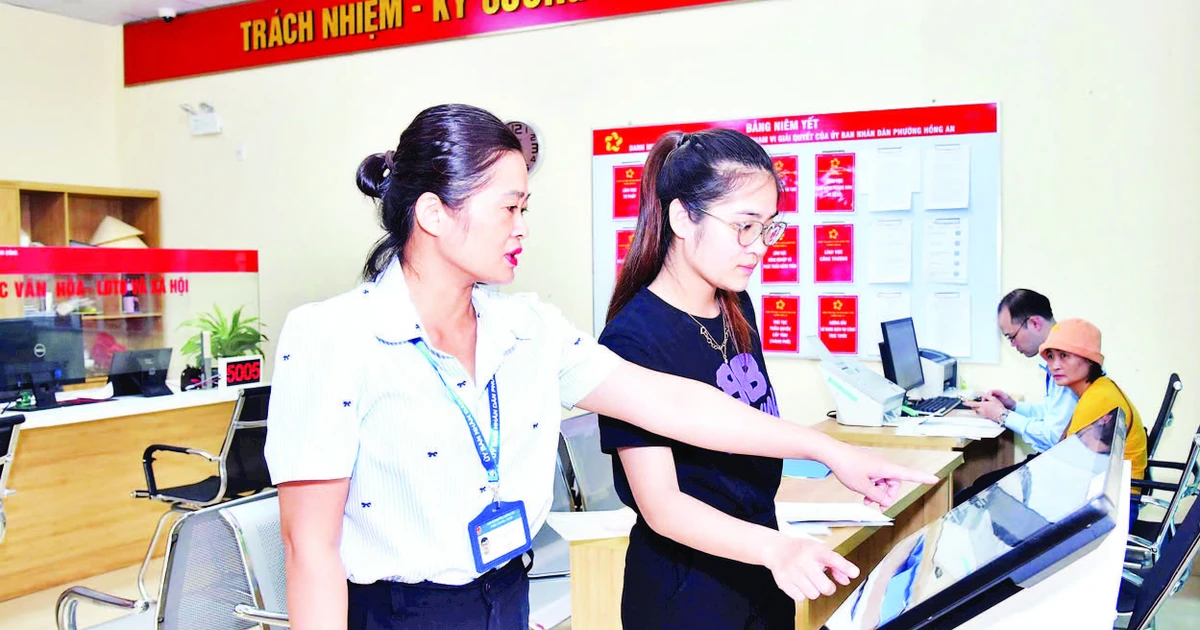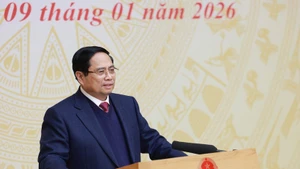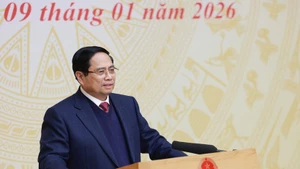Across the lush green hills of Binh Dinh, hundreds of new houses have been constructed to replace dilapidated shelters, becoming secure places of residence with the promise of a stable future. These homes serve not only as living spaces but also as starting points for a series of sustainable poverty reduction programmes, empowering people to confidently pursue their livelihoods.
Unlike previous years, housing support is no longer limited to replacing temporary and damaged dwellings, but is now more flexible in its mobilising of resources to create better conditions for the people. The districts of Vinh Thanh, Van Canh, and An Lao have continuously sought solutions, combining materials, labour, and transport costs to ensure that each new home truly supports long-term stability for its residents.
Officials working in poverty reduction in Binh Dinh firmly believe that to help people escape poverty sustainably, they must be provided with stable livelihoods. Thus, alongside providing safe housing, mountainous districts have linked employment opportunities, offered means of livelihood, and organised vocational training so that poor families can gradually overcome hardship through their own efforts.
Vinh Thanh District, where many families still face housing shortages, has introduced robust and compassionate support policies. In 2025, in addition to the regulated support levels, the district allocated an extra 20 million VND per household to build new houses and 10 million VND per household to repair homes for the 25 most disadvantaged families. Furthermore, 287 approved households received an additional 7 bags of cement and 1.5 million VND per household, enabling them to take a more active role in completing their homes.
“With new houses located in areas which are difficult to access, we proposed additional support for transporting building materials to highland areas like Vinh Kim and Vinh Son. Though the support amount is not large, it is practical and helps residents access materials more easily,” shared Mr To Hieu Trung, Chairman of Vinh Thanh District People’s Committee.
Not only Vinh Thanh, Van Canh District has also implemented a campaign to eliminate temporary housing, supporting 419 households, 403 of which are poor or near-poor, 16 of which being families of people with meritorious services or fallen soldiers. Notably, 18 households in Canh Tien Village (Canh Lien Commune) received special support of up to 34 million VND per household, ensuring the new homes were completed in full.
Entering 2025, An Lao District has provided new homes to 1,375 households, giving them a foundation for further development. “These houses are not just places to live, but also pillars of support that allow people to feel secure in making a living and stabilising their lives,” affirmed Trinh Xuan Long, Chairman of An Lao District People’s Committee.
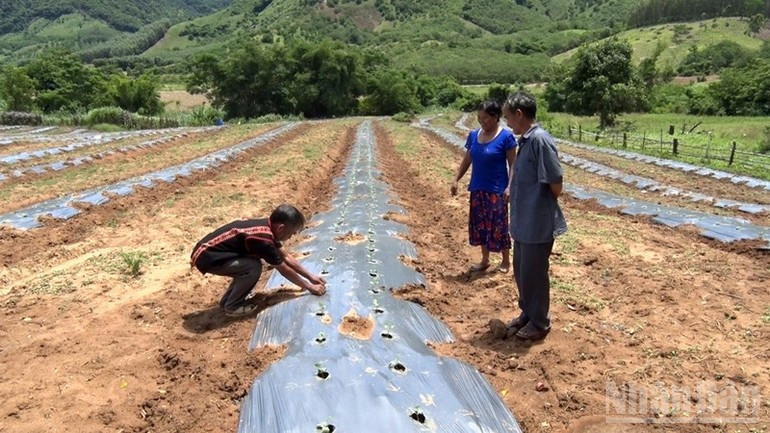
A new path to advancement
Stories of new homes continue in places like Canh Lien in Van Canh, where transporting construction materials once required using motorboats to cross rivers. However, thanks to close guidance from the district and support from the Provincial Military Command, solid houses have now been built, marking a turning point in the lives of many of the area’s most disadvantaged families.
Dinh Van Go, a resident of An Nghia Commune in An Lao District, once worried constantly as his family lived in a makeshift house lacking basic necessities. When it rained, it leaked; when it was sunny, it became unbearably hot. But now, with a solid home newly completed, his family has newfound motivation to strive for a better future.
But having a house alone is not enough, people need stable livelihoods and employment to escape poverty in the long term. For this reason, the mountainous districts have not just stopped at building homes but have synchronised efforts with economic development programmes, providing livelihoods to help residents gradually lift themselves out of poverty.
In Vinh Thanh, the district continues to integrate livelihood support programmes to help poor, near-poor, and recently lifted households gain a stable income. As a result, in 2024, the poverty rate here decreased by 11.66%, and the near-poor rate dropped by 3.62%—encouraging figures.
Meanwhile, An Lao has implemented 52 community projects, approved 3 linkage projects, and supported 886 households in economic development. The key economic models include raising cattle such as cows, goats, and buffaloes, poultry farming, and cultivating crops like pisang awak bananas and green coconuts. These not only provide a stable income but also help revive traditional local production.
At present, the mountainous districts of Binh Dinh are gradually shifting their mindset regarding poverty reduction, encouraging people to rise through their own internal strengths. Van Canh District is leveraging its advantage of hosting Becamex VSIP Binh Dinh Industrial Park, a rapidly growing industrial area, to connect residents with employment opportunities. As a result, many households now have stable jobs in factories and companies, enabling them not only to escape poverty but also to secure long-term income for their families’ well-being.
With sustainable livelihood models and vocational training tied to employment, the poverty rate in the area is clearly declining, gradually leading local lives toward stability. From solid homes to stable economic models, integrated support policies have brought new hope to the most disadvantaged households.
This journey is by no means easy, but with the determination of the authorities and the solidarity of the community, every household will surely have the opportunity to rise, aiming for a prosperous and happy future.
